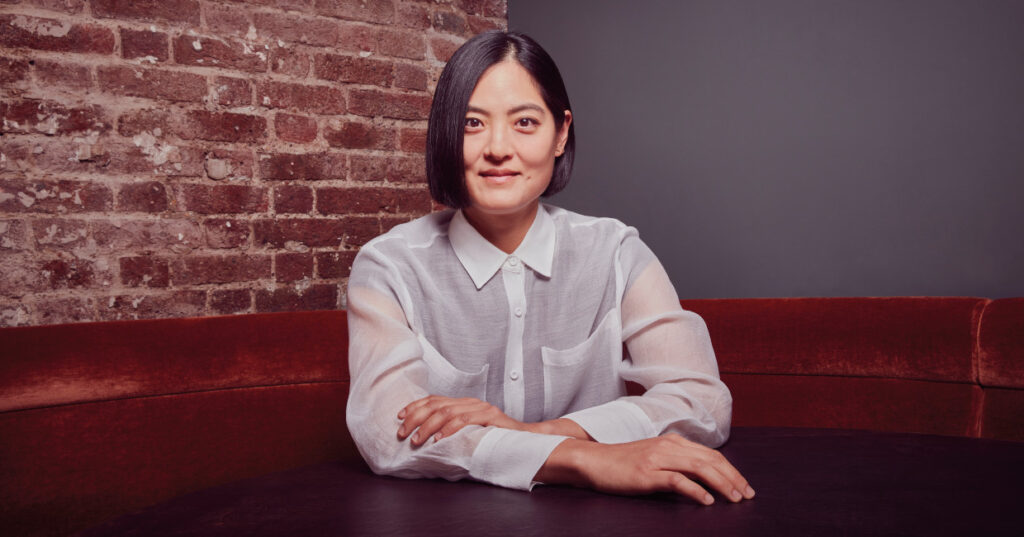With design teams working out of studios in Hong Kong and London, Joyce Wang has curated a team who create spaces which are ‘injected with flair and soul’. She met with Vicky Lewis to talk about the firm’s recent projects and to share her thoughts on luxury hospitality design.
Meeting over a virtual call in a small window of time during her recent jam-packed visit to London, Joyce talked passionately about her well-honed craft and how she hopes to continue developing.
Having studied material science and architecture at MIT (Massachusetts Institutes of Technology) in the US, she completed graduate studies at the Royal College of Art. A stint at Norman Foster’s studio allowed her to gain plenty of experience before heading back to Hong Kong which is when she started the studio. The London branch opened in 2015 with a focus on luxury hospitality projects, hotel restaurant bars, members clubs, and wellness.
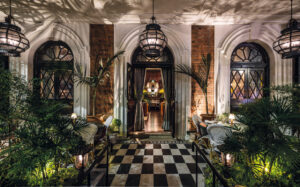
I was keen to know about what has made the studios such a success, Joyce told me: “I’m not sure whether that was any particular reason [we are successful] but we have invested quite a bit in self-propelled projects – projects that don’t necessarily make us any financial gain in the short term, but in the long term actually matter a lot. For example, during the first year of Art Basel in Hong Kong, we hosted a table collection exhibition where I was going out and buying a chunk of marble, carving it into 41 limited edition pieces and then staging an exhibition. That drew interesting people in and, by chance, one of the visitors coming around the studio was the head of design at the Mandarin. He then kept us in mind and a new contact was created.
“There are lots of examples of things like that happening over time and if I really think back to it, the things that didn’t necessarily make us immediate amount of money ended up being the most meaningful and impactful.”
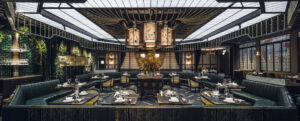
Joyce’s continued investment into the studio and her creative approach to exploring the industry has led to numerous projects in highly regarded spaces around the world. So, what is the ethos of the studio? How does it all work?
“We have about 10 people in each studio and there are no plans for us to grow any bigger than that. We find that this naturally defines our ethos of everyone in the team being a ‘Jack of all trades’ – we don’t have an FF&E department or architectural designers, everyone in the team concentrates on the narrative, the materials, the architectural interventions, and they control the coordination when we go on site. This means there’s a huge amount of ownership of the projects that people work on. We find that just means we can get the best work out of all of our people.”
Communication between teams and across the studios is key for Joyce. There is a three-hour time zone overlap which allows for the sharing of ideas and experiences. Joyce explained: “It is really nice having that synergy. People will bring their different experiences to the table and share it with each other – if they are working with a client that someone else has worked with before, or if they are working on a similar type of project then we often pair people up across the studios.”
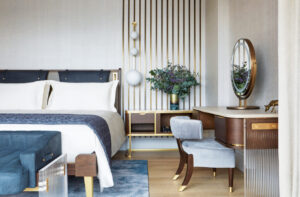
As a design firm who are specialising in the luxury market, I asked Joyce if she could detail what luxury looks like – can she define a luxury hositality design project? Her response was intriguing – luxury is very personal and likely means different things to different people.
“I think luxury goes beyond designers. I have a family, and, in the past, business hotels and family hotels have been promoted and designed as separate entities, but luxury for me is being able to go to a place where the programming and the design enables you to work productively, whilst also having your family around you. That’s luxury, I think because as a working parent, I like being able to go somewhere that I can share with my family and actually gain something from a work perspective. I think more and more spaces allow for that to happen and a lot of operators are realising it’s not just a case of ‘Are you here for business or pleasure?’ The ability to mix functions is key and people are expecting more.”
“Modern luxury probably looks different for different people, which makes it tricky to define, but that’s why I still really like the idea of there being so many different brands and aesthetics to suit different tastes and different people.”
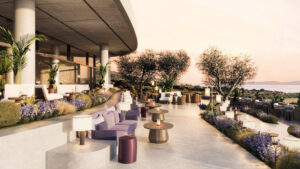
So it’s the personalised approach that is important for Joyce – but the luxury market is so much more than design, she explained: “It’s not just about the place – it’s so much more than that. It all linked together – the programming, the experiences, what can I sign my kids up for? Can I do a cooking class? Can I enjoy time with my husband? It goes beyond design but the vital part of our work is that the design has to accommodate all of that.
“We’ve created products before where it’s all been set up to run really well, but when it’s not operated well then it’s meaningless. They didn’t go through with the spa programme for example, or they played terrible music or the service of the restaurant is too formal – luxury is about that magic coming together when somebody knows how to operate a well-designed space.”
With such an expanse of luxury projects completed by the studio, I wanted to hear from Joyce about those that she has particularly resonated with – any that stand out in her memory?
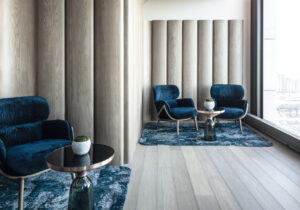
“There are lots! I’d say the Mott 32 brands are definitely ones that come to mind. What makes me really proud about those is that the client keeps coming back to us which is a testament to a really good relationship. I’m also proud of it because we’ve managed to design something very different for many different locations, even though it’s the same concept, each one looks very different. Another is Equinox in New York – it was a huge space and it was their first flagship hotel. We worked on a spa that’s attached to it and we were given a prime space with a lot of programming. I think that the spa in the gym speaks really well to the hotel concept – it was also one of our first projects in New York and being able to accomplish something of that scale in a completely new place was really rewarding.”
We talked about challenges – those that have meant that a design was tricky to get over the line or those which have had specific considerations that have taken time to overcome. How does the studio approach this? Joyce talked about value engineering and modifying designs post-analysis. She said: “With a lot of designs, it’s all rosy until the numbers come through – that’s often when we have to re-specify things and then sometimes items are no longer available or are over budget, then it’s a really tough conversation to be had. But that’s why having a client that also believes in good design is really important.
“Generally, the value engineering part is the biggest challenge. The latest project we have worked on, The Magistracy dining room in Hong Kong was in a historic building and all of the restrictions from the Antiquities and Monuments Office in Hong Kong were a real challenge. There was so much that they wouldn’t allow, for example, touching the ceiling, which just meant we had to be creative – especially with things like working out how to bring in air conditioning, so that was that was really tough for that project.”
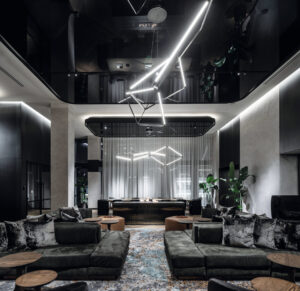
For such an experienced designer, are there still opportunities for Joyce to grow and learn? She said so – plenty in fact! She discussed the project she is currently working on and told me about how invaluable it had been for her to spend time with the design architects and being part of their process: “Clients can vary as to whether they are happy for you to be present when concepts from peers are shared with them, but the biggest learning curve for me is when I see other people in my position present their ideas and I can see their work and how they put everything together.”
So what is next for the studios, and for Joyce? Well there are plenty of projects on the go at the moment – a wine member’s club in Hong Kong, a five star hotel in Hong Kong, and a restaurant in Knightsbridge to name a few. But is there something she would like to tackle that she hasn’t had the opportunity to do as yet? “I’d love to do a resort – maybe a summer one, or a ski resort. I like the idea of doing something more ‘lifestyle’ like that. We’ve done hotels but they’ve been largely urban spaces.”
She is also keen to look further into sustainability across the industry: “I’d like to really educate myself on sustainable materials. Sustainability is hard within the luxury market, because there’s this natural ‘rustic-ness’ that comes with the more sustainable products and a lot of the time the luxury ideals are tied to things that are not particularly sustainable. I’m keen to explore – how do we change that mindset? And how do we challenge clients – as well as brands and fabricators – to create something that feels luxurious whilst maintaining the sustainable standards?”


